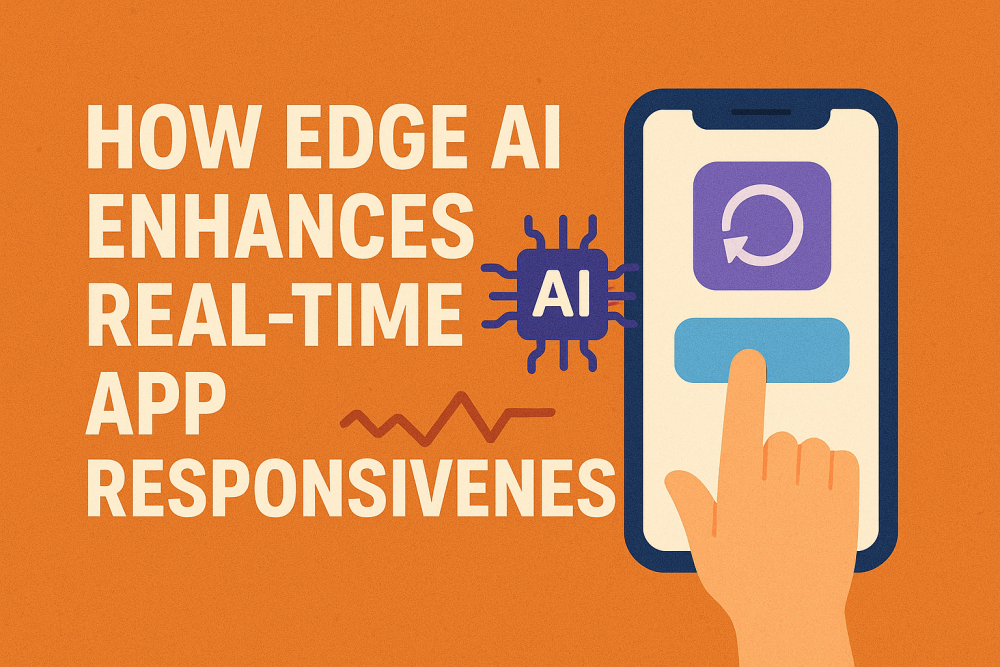In the era of instantaneous digital interaction, the performance of an application is often defined by its responsiveness. The traditional cloud-based AI, are powerful for training and large-scale data analysis, introduces a fundamental bottleneck such as latency. Additionally, the step include that every piece of data must travel to a distant cloud server for processing and then return with a result. Further, the proliferation of Edge AI which is the paradigm shift that solves this problem. By deploying Artificial Intelligence (AI) models directly onto local devices the “edge” of the network fundamentally enhances application responsiveness by enabling real-time decision-making where the data is generated.
The Latency Problem and the Edge Solution
The key to understanding Edge AI’s impact is to understand the issue of network latency. In a cloud-centric model, which typical sequence of events looks like this:
- A sensor or device (e.g., a security camera, an autonomous vehicle) captures data.
- The raw data is transmitted over the internet to a distant, centralized cloud server.
- The cloud server processes the data using a machine learning model (inference).
- The result or process is transmitted back over the internet to the device.
Furthermore, the round-trip journey often takes hundreds of milliseconds or even seconds, and a delay is unacceptable for applications requiring real-time action.
Edge AI have the ability to bypasses the RTT by performing the AI inference locally, right on the device or a nearby gateway. Moreover, the localized processing cuts the decision-making time from potentially seconds down to just milliseconds. Thus, the pre-trained AI models are optimized as well as compressed to run efficiently on the limited computational power of the edge hardware, such as specialized chips that are embedded in the device.
Three Core Pillars of Responsiveness
The Edge AI have the ability to enhance application responsiveness across three critical dimensions:
1. Maximum Speed and Low Latency
The most significant benefit is the dramatic reduction in latency for time-sensitive scenarios:
- Autonomous Vehicles: For instance, a self-driving car must identify a pedestrian or an obstacle and apply the brakes instantly. Thus, waiting for a cloud server’s analysis could be disastrous. Also, Edge AI allows the car to process visual sensor data as well as make a split-second driving decision locally.
- Industrial Automation: For instance, in a smart factory, a robot performing quality control must detect a defect on an assembly line as well as take corrective action within milliseconds to avoid production downtime.
2. Enhanced Reliability and Offline Functionality
The Edge AI have the ability to ensure that responsiveness is maintained even when internet connectivity is poor, irregular, or non-existent. Since the core AI model runs locally, the application can continue to function and provide intelligent responses autonomously. Also, this key feature is crucial for:
- Remote Monitoring: For instance, in the Oil and gas facilities, sensors, or remote healthcare devices can process data as well as trigger emergency alerts without relying on a stable network connection.
- Security Systems: For instance, the surveillance camera have the ability to detect an intervention as well as initiate an alarm instantly, despite of a temporary network outage.
3. Bandwidth and Cost Efficiency
Edge AI systems act as intelligent filters by processing data locally instead of streaming large volumes of raw data to the cloud. Also, the edge device transmits only the critical insights, alerts, or summary data. Thus, the massive reduction in upstream network traffic lowers bandwidth consumption as well as significantly cuts down on cloud storage and processing costs, which in turn allows applications to scale more affordably while maintaining high responsiveness.
Conclusion
Hence, the Edge AI represents a foundational shift in how intelligent applications are designed and deployed by moving AI inference out of the distant cloud and onto the devices themselves. This has directly holds the performance limitations of network latency, unlocking a new level of real-time responsiveness. Thus, the technology is essential for the future of mission-critical applications across autonomous systems, industrial IoT, and real-time patient monitoring, transforming these solutions from merely smart to truly instantaneous.
